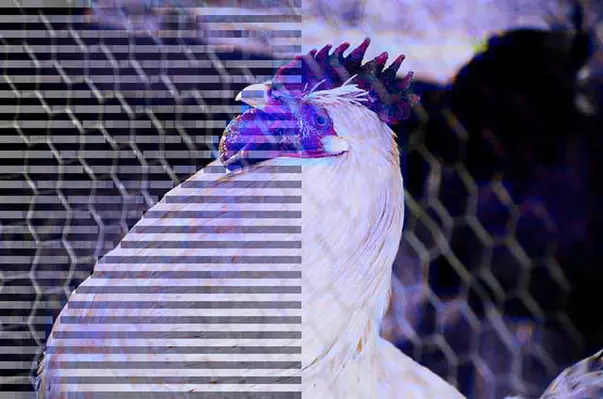Page 2 of 3
Use of evaporative cooling takes the heat out of the situation by utilising a basic law of physics. For liquid (including water) to evaporate it must be supplied with energy in the form of heat, otherwise called the Latent Heat of Vapourisation. Water sprayed into the house as a mist or a fog is composed of very small droplets which readily and rapidly evaporate. And in doing so absorb heat from the house environment and thus lower the temperature inside the poultry house.
Misting systems are useful but the droplets at around 50 µm in diameter will quickly sediment before they can evaporate, to cause damp and mouldy bedding material with discomfort to the birds and encouragement for pests, parasites and disease.
Fogging systems which utilise much smaller droplets of 10 µm or less avoid these problems. However, these very small droplets can enter the ‘airways’ of the birds and lodge in the depths of the respiratory system to cause health problems. The only way for producers to obtain the real and rapid benefits of evaporative cooling, without liquid moisture problems, is to employ a pad cooling/tunnel air system.
Pad cooling/tunnel air systems comprise a continually wetted filter pad at one end of the house and a powerful extractor fan at the other. Air continually drawn out from within the house by the extractor fan is replaced by air pulled in through the wetted filter pad. Water fogged onto the pad in ultra-fine droplets ‘flash evaporates’ taking heat from air drawn into the house. The net result is a continuous tunnel of cool air passing through the house to maintain the birds in a state of perpetual comfort. Birds receive the benefits of evaporative cooling without the problems associated with water droplets in the house atmosphere.
With for instance an outside air temperature of 35° C, a high efficiency cool pad system will reduce house temperature down to 28° C, with a further 5° C drop to a comfortable 23° C due to the wind-chilling effects of the tunnel airflow. Producers with a pad-cooled house but still experiencing hot weather and heat stress problems should not automatically jump to the conclusion that that the pad system is at fault. Dirty shutters can cut airflow by 30 per cent and a 15 per cent fan belt slippage means an equivalent reduction in airflow. Producers should ensure that the house is air- tight, all air leaks are sealed and the tunnel curtains are not blocking the flow of air into the house.
The nozzle tips are the most important part of any evaporative cooling (misting/fogging) system, whether designed to be conventional (overhead) or based on the cool pad design. The nozzle tips are by far the smallest components of the system, but will ultimately determine the characteristics of the mist/fog spray.





